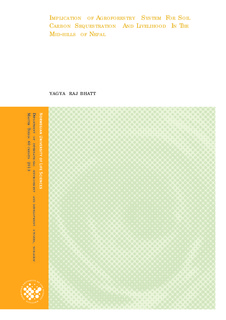| dc.description.abstract | Agricultural practice combined with trees and livestock called “agroforestry” is one possible option for reducing emissions of green house gases in atmosphere as well as to improve livelihood of farmers. Agroforestry systems enhances organic carbon accumulation in soils by providing continuous supplies of organic matter, and increases soil microorganisms by which the nutrient cycle is preserved .Soil carbon stock under agroforestry systems were higher due to increased input of carbon through litter fall and greater root biomass. The adoption of agroforestry increases crop production, income, savings, improves food security and provides fuelwood and fodder. Tree-based agroforestry practice could have a positive effect on rural development through promotion of agricultural industries and improving local economy by increasing opportunity for employment.
The study was focused to illustrate the significant potential of improved agroforestry with exotic fodder species on soil carbon sequestration and livelihood of farmer in the Mid-hills of Nepal. For this study, soil samples were collected from three land use systems, Improved Agroforestry (IA), Traditional Agroforestry (TA), and Forest land in four replicas form. Soil physical and chemical properties (pH, Bulk density, SOC, Texture, NPK) were measured. Similarly, a total of 86 households (58 from project households and 28 from without project households) were interviewed to collect information on existing agroforestry practice, crop and livestock production and fodder and fuel-wood availability.
Improved agroforestry soil had a higher SOC than traditional agroforestry in all depths because of continuous supply of organic matter in the form of leaf litter from agroforestry. The average value of SOC was significantly higher in forest land than TA but there was no difference with IA. It reveals that improved agroforestry practice has the capacity to improve SOC more than traditional agroforestry. Improved agroforestry had more carbon stocks than traditional agroforestry because of continuous supply of organic matter from agroforestry and FYM. The households practicing improved agroforestry would receive $422.40 USD more than traditional agroforestry through carbon trading.
Improved agroforestry was introduced by NAF in 1999. Before then, people were practicing traditional methods. The exotic fodder species Ipil-lipil (Leucanena leucocephala), Bhatmase (Flemingia congesta), Kimbu (Morus alba), and Taki (Bauhinia purpurea) introduced by NAF were frequently distributed in both NAF projects as well as without project households. The number of trees and agroforestry species were found to be different between project and without project households because of higher land holding size and efforts of NAF. It was found that the agroforestry had a pronounced effect on the fodder availability in the area. The major goal of farmers that practiced agroforestry was to increase livestock production by producing more fodder from their land. Hence, the common fodder species were frequently distributed in both project and without project areas. Therefore, the livelihood of farmers in the Mid-hills of Nepal practicing subsistence agricultural with agroforestry could be improved greatly through introducing multipurpose tree species. | no_NO |
